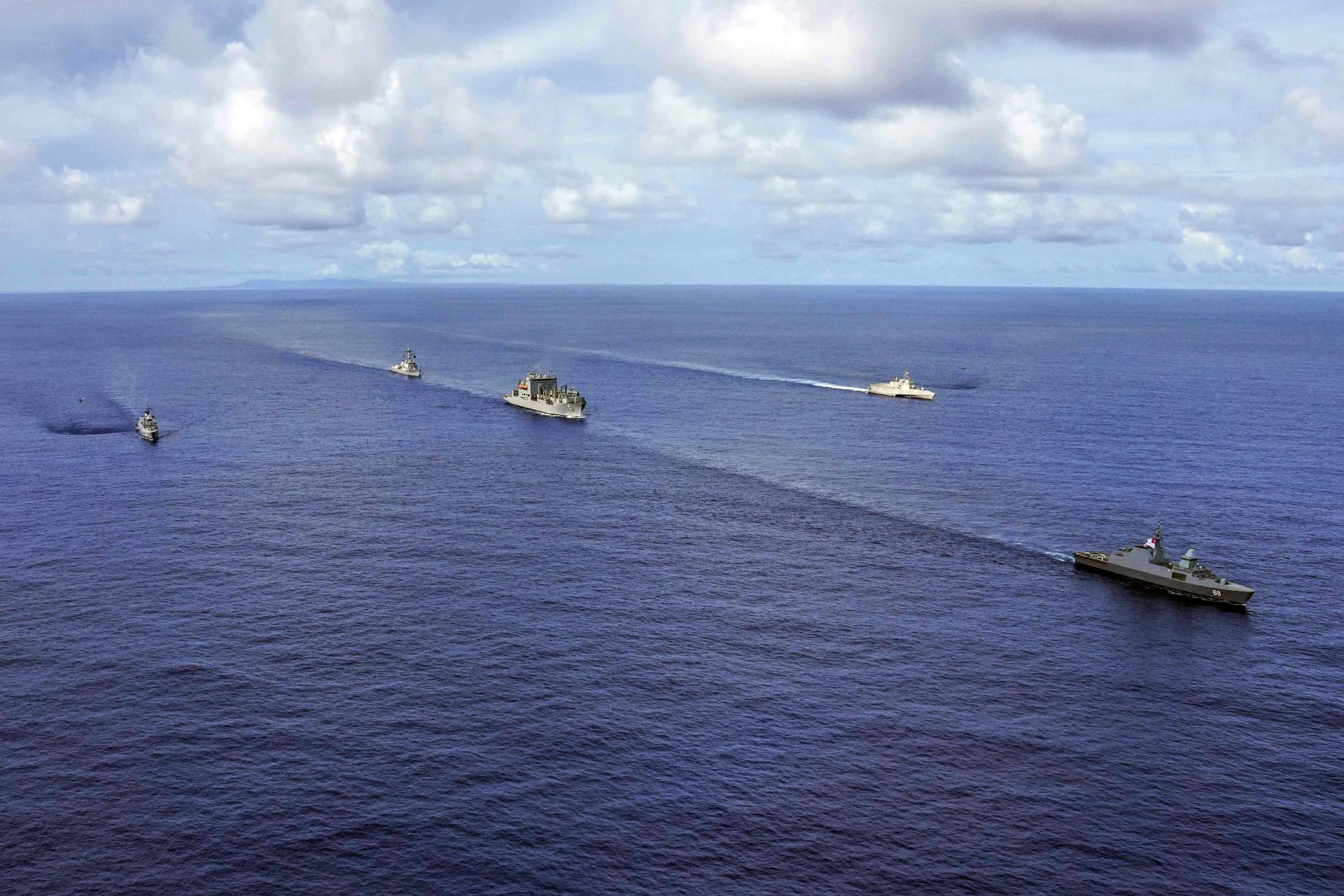3 REASONS WHY THE RSN TRAVELS 5,000KM TO GUAM
Exercise Pacific Griffin is a biennial maritime exercise between the Republic of Singapore Navy (RSN) and the United States Navy (USN) held in the waters off Guam. Here's why the exercise is significant.// Report by Teo Jing Ting
// Photos courtesy of RSN
The RSN and the USN are taking part in Exercise Pacific Griffin (XPG) from 24 Sep to 11 Oct.
Held in the waters off Guam, the bilateral maritime exercise involves two frigates from the RSN – RSS Formidable and RSS Intrepid – and four ships from the USN. These comprise the USN's littoral combat ship USS Gabrielle Giffords, destroyer USS Momsen, auxiliary ship USNS Amelia Earhart and a Los Angeles-class submarine.
Supporting air assets include two Republic of Singapore Air Force’s Sikorsky S-70B Seahawk naval helicopters, as well as P-8 Poseidon aircraft and Hawker Hunter fighter jets from the USN.
Here's what you need to know about the exercise:
1) The RSN is able to flex its sea legs and conduct advanced naval warfare and maritime training in the vast waters off Guam.
While XPG is a valuable platform for the two navies to strengthen their mutual cooperation and interoperability, it is also an opportunity for the RSN to conduct high-end realistic training, said RSN Commander First Flotilla and Commanding Officer of 185 Squadron, Colonel (COL) Lim Yu Chuan.
"The waters off Guam provide the vast and open training space that we need to conduct more complex live weapons and live missile firings."
The RSN was also able to achieve multiple breakthroughs during the exercise, added Commanding Officer of RSS Formidable Lieutenant Colonel (LTC) Chuah Meng Soon.
This included the firing of an Aster surface-to-air missile to successfully intercept a low-observable, high-speed aerial target flying at a distance by RSS Formidable – a first in the exercise series.
RSS Intrepid also launched a Harpoon anti-ship missile against a decommissioned USN warship target.
2) The exercise allows the RSN to benchmark against and train with large established navies like the USN.
This is the second time that XPG is being conducted (the first was in 2017).
"The facilities and support in Guam along with assets such as the submarine and anti-submarine warfare aircraft, and resources of the USN allows both navies to conduct high-end and complex warfare training in all dimensions of naval warfare," said LTC Chuah.
Training with the USN also allows us to learn from and benchmark our capabilities against them. "The US is an important strategic partner for Singapore… (and) the USN is among the most powerful and established navies in the world."
For instance, both navies had the opportunity to hone their proficiency in tactics, targeting and live firing against a surface target at sea – a decommissioned USN ship.
As the Harpoon anti-ship missile was fired from RSS Intrepid, a Naval Strike Missile was also launched from the USN's littoral combat ship USS Gabrielle Giffords.
The sinking exercise was a highlight for Destroyer Squadron 7 Operations Officer (N3) Lieutenant Commander (Lt. Cmdr.) Matthew Biggerstaff.
"The seamless integration of our navies and air forces to employ several rounds of ordnance to ultimately sink the decommissioned USS Ford was truly awesome."
Commenting on the exercise, Commodore of the USN's Destroyer Squadron 7 Captain (CAPT) Matthew J. Jerbi said that XPG provided important opportunities for realistic at-sea training with live ordnance and conditions that cannot be duplicated otherwise.
"Training alongside our Singapore partners in a complex exercise like this is invaluable," he added.
3) XPG provides the opportunity for the two navies to strengthen ties and build interoperability with one another.
Planners from the RSN and USN have worked together closely to make the exercise as challenging as possible.
As lead US planner and coordinator for the XPG 2019, Lt. Cmdr. Biggerstaff said that he had gained a considerable understanding of the RSN’s planning procedures and their tactics in anti-air, anti-surface and anti-submarine warfare.
"This exercise was successful at emphasising cooperation and strengthening the relationship between the two navies. The whole planning cycle was immensely valuable for learning culturally, how we communicate and plan, and better seeing the expertise everyone brings."
For Weapons Control Systems Supervisor Military Expert (ME) 2 Balasubramaniam, training with the USN gave him an opportunity to improve his domain expertise and learn from them.
"We had to work closely with the USN in many areas, from mission planning to the execution of serials. This allowed us to practice our joint operations and understand each other’s processes better," said ME2 Balasubramaniam.
Noting that the RSN is "a great partner in many ways", CAPT Jerbi said: "We worked very closely together throughout the year. Any opportunity we have to work together, to train together, to go to sea together, we always look forward to and this is just another example of a very strong and enduring relationship."
"I can say without a doubt that the RSN is one of our finest partners."










